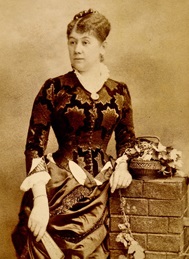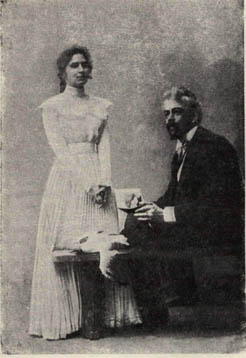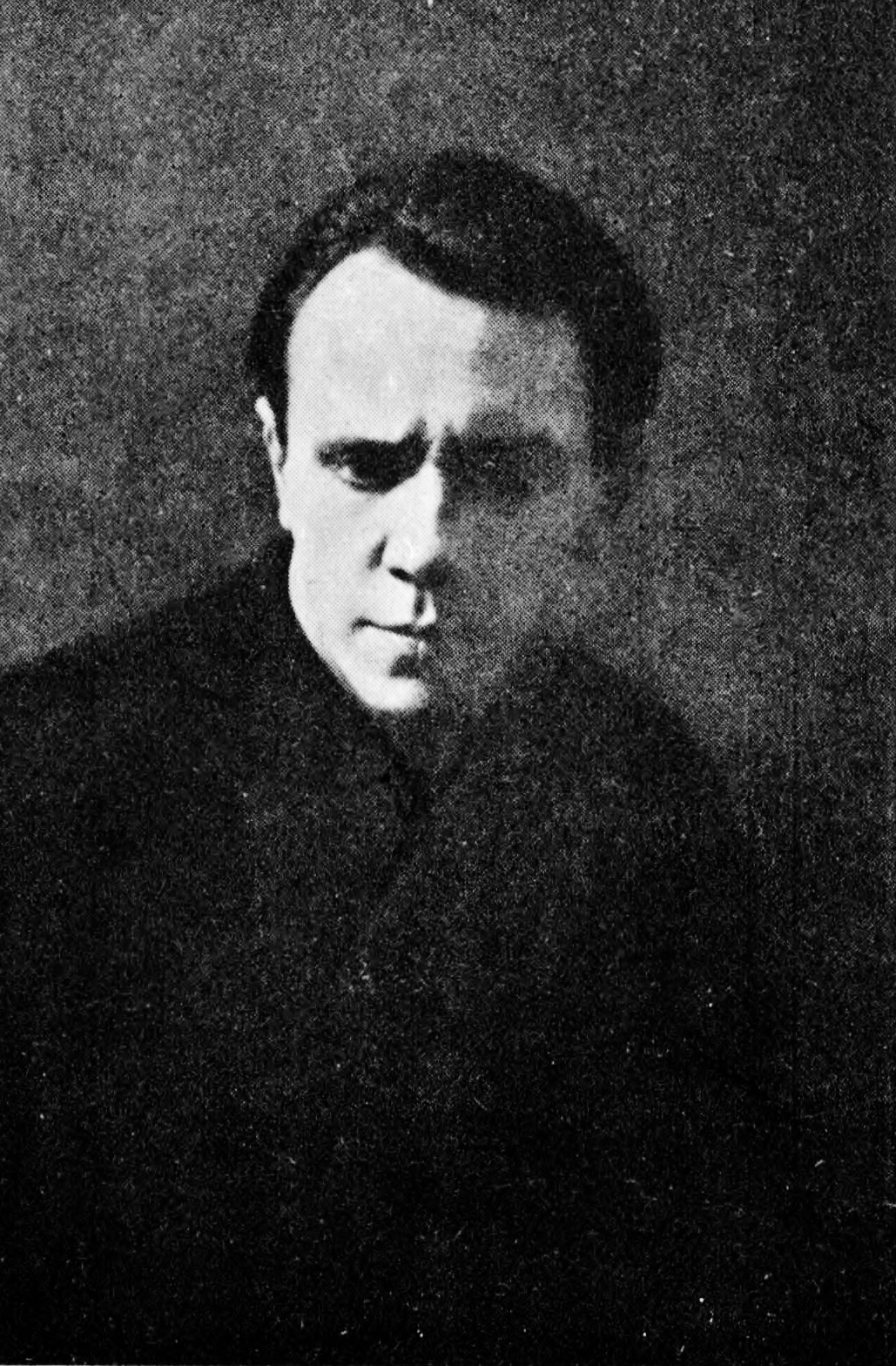|
Stanislavski
Konstantin Sergeyevich Stanislavski ( rus, Константин Сергеевич Станиславский, p=kənstɐnʲˈtʲin sʲɪrˈɡʲejɪvʲɪtɕ stənʲɪˈslafskʲɪj, links=yes; ; 7 August 1938) was a seminal Russian and Soviet theatre practitioner. He was widely recognized as an outstanding character actor, and the many productions that he directed garnered him a reputation as one of the leading theatre directors of his generation. His principal fame and influence, however, rests on his "system" of actor training, preparation, and rehearsal technique. Stanislavski (his stage name) performed and directed as an amateur until the age of 33, when he co-founded the world-famous Moscow Art Theatre (MAT) company with Vladimir Nemirovich-Danchenko, following a legendary 18-hour discussion. Its influential tours of Europe (1906) and the US (1923–24), and its landmark productions of ''The Seagull'' (1898) and ''Hamlet'' (1911–12), established his reputation and ... [...More Info...] [...Related Items...] OR: [Wikipedia] [Google] [Baidu] [Amazon] |
Stanislavski's System
Stanislavski's system is a systematic approach to training actors that the Russian theatre practitioner Konstantin Stanislavski developed in the first half of the twentieth century. His system cultivates what he calls the "art of experiencing" (with which he contrasts the "art of representation").Benedetti (1999a, 201), Carnicke (2000, 17), and Stanislavski (1938, 16—36 "art of representation" corresponds to Mikhail Shchepkin's "actor of reason" and his "art of experiencing" corresponds to Shchepkin's "actor of feeling"; see Benedetti (1999a, 202). It mobilises the actor's conscious thought and will in order to activate other, less-controllable psychological processes—such as emotional experience and subconscious behaviour—sympathetically and indirectly. In rehearsal, the actor searches for inner motives to justify action and the definition of what the character seeks to achieve at any given moment (a "task"). Later, Stanislavski further elaborated what he called 'the Sy ... [...More Info...] [...Related Items...] OR: [Wikipedia] [Google] [Baidu] [Amazon] |
List Of Productions Directed By Konstantin Stanislavski
This article offers a chronological list of productions directed by Konstantin Stanislavski. It does not include theatrical productions in which Konstantin Stanislavski, Stanislavski only acted. Until he was thirty three, Stanislavski appeared only as an Amateur theatre, amateur onstage and as a Theatre director, director, as a result of his family's discouragement. When he was twenty five, he helped to establish a Society of Art and Literature, which aimed to unite amateur and professional actors and artists. His professional career began in 1896 when he co-founded the Moscow Art Theatre (MAT) with Vladimir Nemirovich-Danchenko. Later in his life, he created a series of studios whose aims were primarily Theatre pedagogy, pedagogical but which also presented public performances. This list of productions directed by Stanislavski includes amateur, professional, and studio productions. When the sources disagree about the exact date of a production's Premiere, première, that given ... [...More Info...] [...Related Items...] OR: [Wikipedia] [Google] [Baidu] [Amazon] |
Moscow Art Theatre Production Of Hamlet
The Moscow Art Theatre production of ''Hamlet'' was a 1911–12 production of Hamlet, produced by Konstantin Stanislavski and Edward Gordon Craig. It is particularly important in the history of performances of ''Hamlet'' and of 20th-century theatre in general. Despite hostile reviews from the Russian press, the production attracted enthusiastic and unprecedented worldwide attention for the theatre, with reviews in Britain's ''The Times'' and in the French press that praised its unqualified success. The production placed the Moscow Art Theatre "on the cultural map for Western Europe", and it came to be regarded as a seminal event that influenced the subsequent history of production style in the theatre and revolutionised the staging of Shakespeare's plays in the 20th century. It became "one of the most famous and passionately discussed productions in the history of the modern stage." Chronology of production The story of Craig and Stanislavski began in 1908 when the eccentric Amer ... [...More Info...] [...Related Items...] OR: [Wikipedia] [Google] [Baidu] [Amazon] |
Moscow Art Theatre Production Of The Seagull
The Moscow Art Theatre production of ''The Seagull'' in 1898, directed by Konstantin Stanislavski and Vladimir Nemirovich-Danchenko, was a crucial milestone for the fledgling theatre company that has been described as "one of the greatest events in the history of Russian theatre and one of the greatest new developments in the History of drama, history of world drama." It was the first production in Moscow of Anton Chekhov, Anton Chekhov's 1896 play ''The Seagull'', though it had been performed with only moderate success in Saint Petersburg, St. Petersburg two years earlier. Nemirovich-Danchenko, who was a friend of Chekhov's, overcame the writer's refusal to allow the play to appear in Moscow after its earlier lacklustre reception and convinced Stanislavski to direct the play for their innovative and newly founded Moscow Art Theatre (MAT). The production opened on . The MAT's success was due to the fidelity of its delicate representation of everyday life, its intimate, Ensemble cas ... [...More Info...] [...Related Items...] OR: [Wikipedia] [Google] [Baidu] [Amazon] |
My Life In Art
''My Life in Art'' is the autobiography of the Russian actor and theatre director Konstantin Stanislavski. It was first commissioned while Stanislavski was in the United States on tour with the Moscow Art Theatre, and was first published in Boston, Massachusetts in English in 1924. It was later revised and published in a Russian-language edition in Moscow under the title '. It is divided into 4 sections entitled: 1-Artistic Childhood, 2-Artistic Youth, 3-Artistic Adolescence and 4-Artistic Adulthood. Contents Stanislavski divides the work into four sections representing different stages of his life: childhood, adolescence, youth, and adulthood. Artistic Childhood This section, comprising 11 chapters, begins with Stanislavski's birth in 1863 and ends in his early twenties. He first describes his family life and upbringing, discussing his early trips to the circus, the Italian opera, the ballet and his introduction to the Russian theatre. He describes the professional Puppet Show ... [...More Info...] [...Related Items...] OR: [Wikipedia] [Google] [Baidu] [Amazon] |
Moscow Art Theatre
The Moscow Art Theatre (or MAT; , ''Moskovskiy Hudojestvenny Akademicheskiy Teatr'' (МHАТ) was a theatre company in Moscow. It was founded in by the seminal Russian theatre practitioner Konstantin Stanislavski, together with the playwright and director Vladimir Nemirovich-Danchenko. It was conceived as a venue for Naturalism (theatre), naturalistic theatre, in contrast to the melodramas that were Russia's dominant form of theatre at the time. The theatre, the first to regularly put on shows implementing Stanislavski's system, proved hugely influential in the acting world and in the development of modern American theatre and drama. It was officially renamed the Gorky Moscow Art Theatre in 1932. In 1987, the theatre split into two theatre company, troupes, the Moscow Gorky Academic Art Theatre and the Moscow Chekhov Art Theatre. Beginnings At the end of the 19th-century, Stanislavski and Nemirovich-Danchenko both wanted to reform Russian theatre to high-quality art that was a ... [...More Info...] [...Related Items...] OR: [Wikipedia] [Google] [Baidu] [Amazon] |
Anton Chekhov
Anton Pavlovich Chekhov (; ; 29 January 1860 – 15 July 1904) was a Russian playwright and short-story writer, widely considered to be one of the greatest writers of all time. His career as a playwright produced four classics, and his best short stories are held in high esteem by writers and critics. Along with Henrik Ibsen and August Strindberg, Chekhov is often referred to as one of the three seminal figures in the birth of early modernism in the theatre. Chekhov was a physician by profession. "Medicine is my lawful wife," he once said, "and literature is my mistress." Chekhov renounced the theatre after the reception of ''The Seagull'' in 1896, but the play was revived to acclaim in 1898 by Konstantin Stanislavski's Moscow Art Theatre, which subsequently also produced Chekhov's ''Uncle Vanya'' and premiered his last two plays, ''Three Sisters (play), Three Sisters'' and ''The Cherry Orchard''. These four works present a challenge to the acting ensemble as well as to a ... [...More Info...] [...Related Items...] OR: [Wikipedia] [Google] [Baidu] [Amazon] |
Michael Chekhov
Mikhail Aleksandrovich Chekhov (; 16 August 1891 – 30 September 1955), known as Michael Chekhov, was a Russian-American actor, Theatre director, director, author, and theatre practitioner. He was a nephew of the playwright Anton Chekhov and a student of Konstantin Stanislavski. Stanislavski referred to him as his most brilliant student. Although mainly a stage actor, he made a few notable appearances on film, perhaps most memorably as the Freudian analyst in Alfred Hitchcock's ''Spellbound (1945 film), Spellbound'' (1945), for which he received his only Academy Awards, Academy Award nomination. Life He was born in Saint Petersburg, the son of Alexander Chekhov (the elder brother of Anton Chekhov) and his wife Natalya Aleksandrovna Golden. It was his father's second marriage. His mother, a Russian Jew, had been the governess to the children from his father's first marriage. He was raised in a middle-class family; his father was in the Imperial Customs Service and was a mod ... [...More Info...] [...Related Items...] OR: [Wikipedia] [Google] [Baidu] [Amazon] |
Realism (theatre)
Realism was a general movement that began in 19th-century theatre, around the 1870s, and remained present through much of the 20th century. 19th-century realism is closely connected to the development of modern drama, which "is usually said to have begun in the early 1870s" with the "middle-period" work of the Norwegian dramatist Henrik Ibsen. Ibsen's realistic drama in prose has been "enormously influential." It developed a set of dramatic and theatrical conventions with the aim of bringing a greater fidelity of real life to texts and performances. These conventions occur in the text, (set, costume, sound, and lighting) design, performance style, and narrative structure. They include recreating on stage a facsimile of real life except missing a fourth wall (on proscenium arch stages). Characters speak in naturalistic, authentic dialogue without verse or poetic stylings, and acting is meant to emulate human behaviour in real life. Narratives typically are psychologically drive ... [...More Info...] [...Related Items...] OR: [Wikipedia] [Google] [Baidu] [Amazon] |
Vladimir Nemirovich-Danchenko
Vladimir Ivanovich Nemirovich-Danchenko (; – 25 April 1943) was a Soviet and Russian theatre director, writer, pedagogue Pedagogy (), most commonly understood as the approach to teaching, is the theory and practice of learning, and how this process influences, and is influenced by, the social, political, and psychological development of learners. Pedagogy, taken ..., playwright, producer and theatre administrator, who founded the Moscow Art Theatre with his colleague, Konstantin Stanislavski, in 1898. Biography Vladimir Ivanovich Danchenko was born into a Russian nobility, Russian noble family of mixed Zaporozhian Cossacks, Ukrainian-Armenians, Armenian descent, in the village of Shemokmedi near Ozurgeti (Guria, Georgia (country), Georgia). His father, Ivan Danchenko, was an officer in the Imperial Russian Army, and his mother, Aleksandra Yagubyan (1829–1914), was Armenian from the Tiflis Governorate, Governorate of Tiflis. He went to high school in Tbilisi, continuin ... [...More Info...] [...Related Items...] OR: [Wikipedia] [Google] [Baidu] [Amazon] |
Yevgeny Vakhtangov
Yevgeny Bagrationovich Vakhtangov (also spelled Evgeny or Eugene; ; 13 February 1883 – 29 May 1922) was a Russian actor and theatre director who founded the Vakhtangov Theatre. He was a friend and mentor of Michael Chekhov.Martin BanhamThe Cambridge guide to theatre Cambridge University Press, 1995, p. 1157:"''Armenian born, Vakhtangov studied law at Moscow University before enrolling at A. I. Adashev’s drama school, where he was taught by, among others, Leopold Sulerzhitsky''." He is known for his distinctive style of theatre, his most notable production being ''Princess Turandot'' in 1922. Early life and education Vakhtangov was born to an Armenian father and a Russian mother in Vladikavkaz, Terek Oblast (now the capital of Northern Ossetia). He was educated at Moscow State University for a short time before joining the Moscow Art Theatre in 1911. Career Vakhtangov rose in the ranks at the Moscow Art Theatre, and by 1920 he was in charge of his own theatre studio. Fo ... [...More Info...] [...Related Items...] OR: [Wikipedia] [Google] [Baidu] [Amazon] |
Maria Lilina
Maria Petrovna Alekseyeva (; Perevoshchikova �ерево́щикова 3 July 1866 – 24 August 1943) was a Russian and Soviet stage actress, associated with the Moscow Art Theatre, better known under her stage name Lilina (Ли́лина). Konstantin Stanislavski, the MAT director, was her husband. In 1933, Lilina was designated as a People's Artist of the RSFSR.Maria Petrovna Lilina Biography at the Moscow Art Theatre site Career Lilina was a founding member of the MAT troupe which she joined in 1898. Her two breakthrough performances, which brought her to fame, were Masha in '''' and Sonya in '' |









